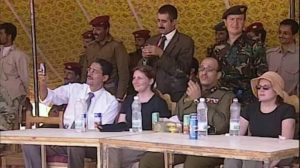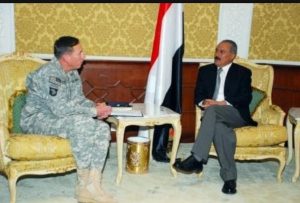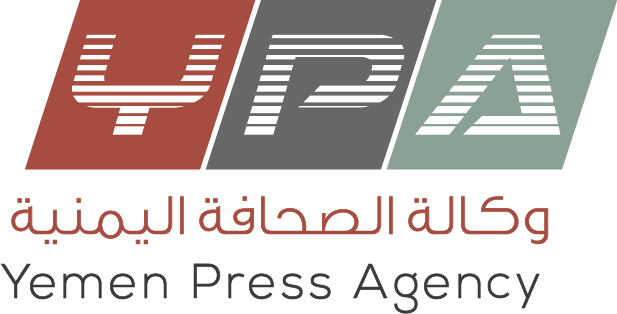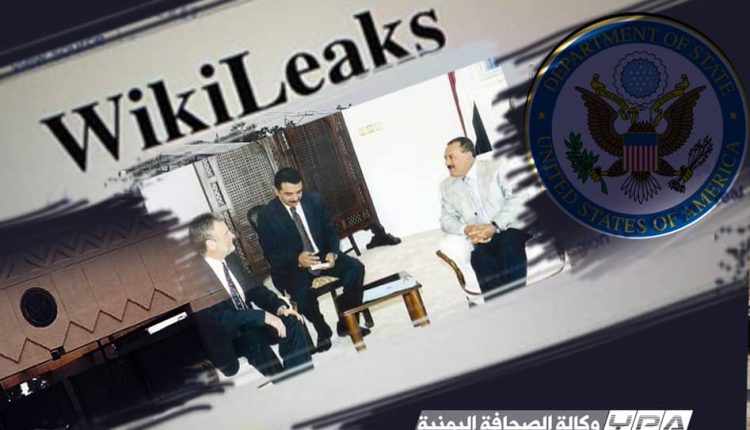SANAA, Aug. 17 (YPA) – Facts revealing what Yemen was experienced during the tenure of former President Ali Abdullah Saleh, his relationship with Washington, and how he harnessed the levers of political decision-making according to American designs, which shaped its desires and interests.
Washington had achieved their goals with the cooperation of Saleh, who devoted most of his efforts to implementing American orders, whatever they may be.
in 1978, when Ali Abdullah Saleh, (known as Afash) assumed the presidency until his departure under popular pressure in 2012, the relationship between Sanaa and Washington was developed, especially after the events of September 11, 2001, when al-Qaeda’s role in Yemen was escalated. The US administration then used that incident, during which the World Trade Center building in Washington was bombed, as a pretext to expand its influence in the region it called the “Middle East,” including Yemen, amid the Yemeni government’s attempts at obfuscation of American intervention in Yemen, the famous WikiLeaks documents were leaked, revealing the close cooperation between the Saleh regime and Washington. The documents confirmed that American intervention in Yemen went beyond security coordination against al-Qaeda to the point of interfering in Yemeni sovereignty and political decision-making.
The first step toward undermining Yemeni sovereignty was to allow American forces to carry out covert military operations against al-Qaeda. This concession of sovereignty reflected Saleh’s desire to obtain American support. WikiLeaks revealed that Saleh adopted a policy of media deception and lying to the public about the nature of these attacks, claiming they were Yemeni strikes.
This media deception was aimed to preserve the image of the Yemeni regime as a sovereign power capable of protecting security, while the truth was pointed to direct American intervention. Saleh told General David Petraeus, then commander of US Central Command, “We will continue to say these bombs are ours, not yours,” according to the documents [1, 2]. Documents were shown that Saleh was willing to make significant concessions to Yemeni sovereignty in exchange for American support, while attempting to maintain a sovereign image with his people.
America’s Ambitions in Yemen.
The Western goal of controlling Yemen was represented a new goal for America, given Yemen’s unique geographical location. It had worked to achieve this goal using devious methods and intensifying conspiracies.
The first pretext for the American presence in Yemen was the bombing of the USS Cole in Aden on October 12, 2000. Washington sent 2,000 soldiers and officers to investigate. They then fabricated the pretext of piracy, prompting America to deploy frigates, warships, and a destroyer off the Yemeni coast.
America imposed its presence in Yemen after the Saleh government had agreed to the 2001-2002 “war on terror” agreement, which imposed new strategies in Yemen and seized control of military bases, most notably the Al-Anad base.
Following the 2011 “Arab Spring” revolution, the US administration adopted the theory of creative chaos to implement the New Middle East project, which calls for dividing the region’s countries into 54 to 56 states based on ethnic, religious, and regional factors.
America Destroys Air Defense Missiles.
The first phase was the most dangerous in Yemeni history, as Ali Afash played a role in tightening America’s grip on Yemen, to the point that air defense missiles were destroyed.
A US delegation comprised Dennis Haddrick, head of the State Department’s Office of Weapons Removal and Abatement; Santo Polizzi, the office’s technical expert; Niels Talbot, Deputy Director of Programs in the Bureau of Counterterrorism and Countering Violent Extremism at the Department of State, Laurie Freeman, and the military attaché at the US embassy in Sana’a held meetings with Yemeni Ministry of Defense officials at the time to pressure them to hand over the missiles in preparation for their complete destruction. With the approval of his uncle, Ali Afash, Ammar Mohammed Abdullah Saleh oversaw to the complete the mission, in exchange for privileges.

Indeed, the result, achieved with the assistance of the American company “Ronco,” which specializes in handling explosives, was the destruction of the first batch of air defense missiles, which were detonated in the Al-Jadaan area of Marib province on February 28, 2005. The missiles were contained 1,078 SAM-7 Strela missiles, 62 SAM-14 missiles, and 20 SAM-16 missiles, for a total of 1,161 missiles. The number of shoulder-fired air defense missile launchers destroyed was 13, and the number of missile batteries destroyed was 52.
After that, in another operation, a second batch of air defense missiles was destroyed and damaged on July 27, 2009, at a military base in Wadi Halhalan, Marib province. The operation got involved destroying 102 air defense missiles, most of which were SAM-7 Strela and SAM-14 missiles, and two SAM-16 missiles. In additional to about 40 shoulder-fired air defense missile launchers was destroyed, and 51 missile batteries was also destroyed in the operation. The total number of Yemeni army air defense missiles, shoulder-fired missile launchers, and missile batteries that were destroyed due to the agreement between the United States, Ali Abdullah Saleh, and his nephew, Ammar Saleh, reached 1,263 missiles, 52 missile launchers, and 103 batteries.
The six wars on Saada province, north of Yemen.
In 2002, Saleh intensified his meetings with American leaders, in accordance with American directives, specifically in March of that same year, he visited Washington and met with US President George W. Bush, who told him, “You can only be with or against America, if you are with us, we want results”. Saleh expressed his readiness and commitment.

From 2004 to 2010, Yemen witnessed major US interventions. Due to these interventions, the Saleh regime launched its six wars on Saada.
On March 20, 2004, Saleh met with the commander of US Central Command, John Abizaid. This meeting was a prelude to the launch of the war on Saada. In the same year, US ambassador, Edmund Hull, visited Saada, during which he visited the Talh popular market and directed the government to withdraw light and medium weapons from local markets. This was an attempt to disarm citizens so they would be unable to resist, as part of the process of withdrawing and destroying heavy and strategic weapons.
In 2004, Ali Abdullah Saleh met with US Secretary of Defense Donald Rumsfeld. After Saleh traveled to Georgia and met with US President George W. Bush at the G8 summit on June 9, 2004, the regime launched a war on Saada nine days after his meeting with Bush on June 18, 2004.
US Role in the Saada Wars.
In 2014, dating back to September 2004, WikiLeaks published a document revealing the former US Ambassador to Sanaa Thomas Krajeski sent a letter to the US State Department, stating that “the Yemeni regime headed by Ali Abdullah Saleh downplayed the US role in the assassination of Hussein Badr al-Din al-Houthi, the founder of the Ansarallah movement, despite the direct assistance was provided by the US to carry out the operation.
The ambassador stated in the letter: “A US-trained counter-terrorism team led the operation that resulted in al-Houthi’s death.”
The United States also participated in the wars on Saada by providing maps and aerial surveys via reconnaissance aircraft, a fact the WikiLeaks documents confirmed.
Jeremy Scahill, the he author of Dirty Wars, revealed that the United States carried out numerous covert operations in Yemen through the so-called Special Operations Unit (SAU), known as the G-SOC. Saleh also met with the head of this unit, William McRaven, who considered the world an open arena for assassinations. Saleh was boasted about the meeting by publishing a photo of McRaven who was described as an important American guest. This was a photo Washington would not have published, as the unit McRaven heads was linked to numerous massacres against civilians in Iraq, Afghanistan, and Yemen.
Documents Reveal the Hidden.
These and other facts were revealed by WikiLeaks documents, which leaked five documents related to air defense missiles in Yemen, including the document No. 1402, which discusses arrangements for the destruction of the second batch of missiles in June 2009.
The Document No. 2520, which discusses the agreement signed between the United States and Yemen, under which a stockpile of no less than 1,435 air defense missiles would be destroyed on September 28, 2004. Perhaps the most important document was document No. 2346, which discusses the visit of the US Assistant Secretary of State for Political-Military Affairs to Saleh and the details of the dialogue between them regarding the air defense system.
Consequently, the US administration’s interference in Yemeni affairs was based on a government agreement headed by Saleh. This administration could succeed in dividing loyalty between two families, the “Family of Saleh” and the “Family of Al-Ahmar”, who are leading the General People’s Congress (GPC) and the Islah Party. This resulted in bloody clashes between the two parties in 2011. Then, the US claimed that Yemen had failed in its security, imposing its guardianship over the country under the pretext of protecting international peace and security.
Despite the US’s provision of intelligence and security support to former President Saleh, the chaos was prevailed in the country and the security was collapsed from 2011 to 2014, given the continued US influence in Yemen. Even with President Abdu Rabbuh Mansur Hadi assuming power, US ambassador Gerald Michael Feierstein was the de facto ruler of Yemen.
On June 12, 2012, the US undertook to formulate a new strategy to determine Yemen’s future and its political, security, and military orientations. The US sponsored the issuance of Security Council Resolution 2051 in 2012, which called for “full implementation of the Gulf Initiative and its Implementation Mechanism” to end the popular revolution of February 11, 2011.
The US paved the way for the military aggression against Yemen on March 26, 2015. WikiLeaks documents exposed that the US Embassy’s military attaché, Randolph Rosen, requested that KIG monitor the site of the Second Brigade of the Yemeni Air Force. This camp was one of the first sites that was targeted in the In the first raids of the Saudi-led aggression coalition.


